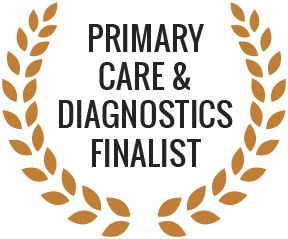Scarlet fever – symptoms, causes & treatment
Over the last year, the UK has seen an increase in cases of scarlet fever and group A streptococcus infections. These numbers are sufficiently higher than in previous years to raise concern among health professionals. The good news is that it seems that numbers are now coming down, but it’s still important to be aware of the symptoms of this infectious disease and know what to do.
So what is scarlet fever exactly?
Scarlet fever is a contagious bacterial infection primarily affecting children aged 5 to 15. It is caused by group A Streptococcus bacteria, the same bacteria responsible for strep throat. A distinct rash, sore throat, and high fever characterize scarlet fever. Although it was once a serious illness, advancements in medical science have made it less severe and easily treatable.
Causes
Scarlet fever is caused by the release of toxins from Streptococcus bacteria. These toxins enter the bloodstream and cause the characteristic symptoms. The infection spreads through respiratory droplets, typically when an infected person coughs or sneezes. It can also spread through contact with contaminated objects or surfaces.
Symptoms
The symptoms of scarlet fever usually appear within one to four days after exposure to the bacteria. The most common symptoms include:
- a sore throat
- fever
- headache
- swollen glands in the neck
- A rash
The rash, which gives the illness its name, typically appears within two days of the onset of symptoms.
The rash starts as tiny red bumps, often resembling sandpaper, spreading across the body. It is most prominent in the creases of the groin, armpits, and elbows.
Other symptoms may include a white coating on the tongue, flushed cheeks, and a strawberry-like appearance of the tongue.
Treatment
If you suspect your child has scarlet fever, it is important to seek medical attention promptly. The doctor will perform a physical examination and may order a throat swab to confirm the infection. Antibiotics, such as penicillin or amoxicillin, are the primary treatment for scarlet fever. These medications help eliminate the bacteria and prevent complications. It is crucial to complete the full course of antibiotics, even if symptoms improve, to eradicate the infection completely.
In addition to antibiotics, other measures can help alleviate symptoms and promote recovery. Over-the-counter pain relievers like acetaminophen or ibuprofen can help reduce fever and relieve sore throat pain. Gargling with warm saltwater or using throat lozenges may also provide temporary relief. It is important to encourage plenty of rest and fluids to prevent dehydration.
Prevention
Preventing the spread of scarlet fever is crucial to protect vulnerable individuals. Good hygiene practices, such as frequent handwashing, covering the mouth and nose when coughing or sneezing, and avoiding close contact with infected individuals, can help reduce the risk of transmission.
Promptly disposing of tissues and regularly disinfecting commonly touched surfaces can also help prevent the spread of bacteria.
In conclusion, scarlet fever is a bacterial infection primarily affecting children. While it can cause discomfort and distress, prompt medical attention and appropriate treatment can effectively manage the illness. By practising good hygiene and taking preventive measures, we can minimize the spread of this contagious infection and ensure the well-being of our communities.







